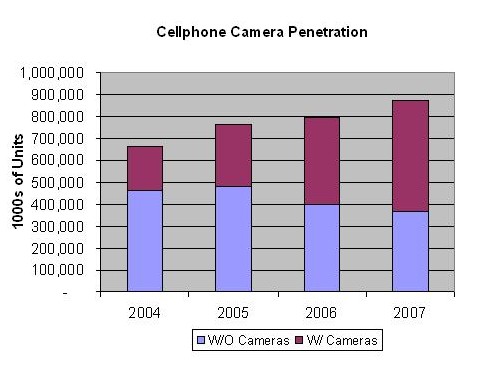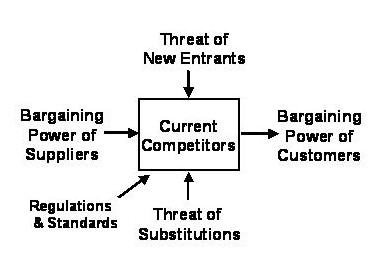This is a re-post from waaay back in 2005, which was my most popular post ever. Google search picked up on it, and I would get occasional emails from students asking more questions.
So posted here again, although my guess with almost 20 years more information on the web there are a lot of other places to find this info, so doubt it will get traffic today.
Professor Michael Porter is still alive today at 77.
--------------------------
From the mailbag: Would you recommend a good book or two on the TAM/SAM/SOM/3C business planning process?
People
make fun of scientists and engineers with their use of acronyms, but
marketing has plenty of its own, and someone not in marketing may wonder
what the hell they mean.
To answer the question, most marketing
books today typically try to push a "new" concept - guerilla marketing,
viral marketing, etc. - rather than this basic stuff, so I'll give a
quick run down on these items using some real-world examples before
getting to a recommendation.
Scenario - You market a widget for the cellphone camera market. Your widget is only used in phones that have cameras embedded in them.
TAM - Total Available Market - In this example this would be the total cellphone market.
SAM - Served Available Market - This would be cellphones with cameras since your product is only used in them.
So the first question, is why distinguish between TAM and SAM, especially since you don't even sell into phones without cameras? The answer is that one way to grow your revenue without increasing market share is to grow the number of cellphones with cameras (or the penetration rate). So the SAM/TAM designation is used to distinguish between actually growing your market share versus just growing your volume. It also allows you to look at strategies on how to push penetration for your served segment instead of just market penetration if you happen to be in a market where SAM penetration is stuck. This chart shows the TAM/SAM breakdown for cellphone cameras:

Obviously there are plenty of markets where the TAM and SAM are the same.
SOM - Share of Market - this is just the market share you have in your SAM, or in this case your total volume versus the total SAM volume. As noted above, by comparing your SOM to both your SAM and your TAM, you can get a feel if you are really growing market share, or just increasing volume along with the total market growth.
Okay so far? Next we get to the 3Cs. Everyone knows the 3Rs, but what are the 3Cs of Marketing? Customers, Company, and Competition. The idea is that when doing business planning you have to do an analysis and get an understanding of these items when creating a business plan. So in our case you would do an analysis of customers Nokia, Samsung, Motorola, etc. Look at what your competition has on the market, what their roadmaps are, and also understand what your company's products and roadmaps are and how they compare and serve the market. In doing this analysis you would probably do the 4Ps: Product, Pricing, Placement and Promotion.
When I do business planning, however, I like the model presented by Michael Porter in his book Competitive Advantage. This is a pretty hefty read, and a little dated now, but the model itself is timeless and what I use for business analysis. It expands on the 3C concept to understand an industry through its entire value chain:

The thing Porter points out with this model is that just understanding your competitors, customers and company is not enough. For example, can a supplier forward integrate into your market and become a competitor? Can a customer backward integrate and become a competitor? New entrants and substitutions are always a threat. And regulations by the government should always be considered since they can break - or create - entire markets on their own (v-chip makers owe their whole product line's existence to a government regulation).
Porter has some more recent books on this topic, and his model has been picked up by plenty of others, so I would suggest a look along this line of thought for anyone doing business analysis or planning.

No comments:
Post a Comment